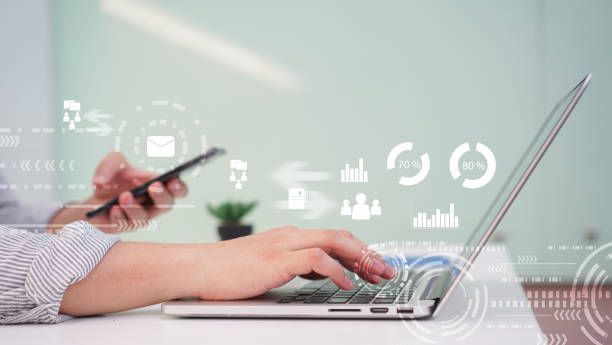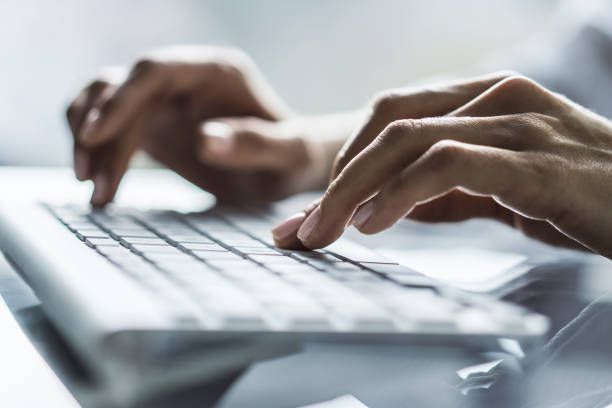Email communication plays a vital role in today's professional world, facilitating effective collaboration and efficient information sharing. However, in the fast-paced digital landscape, it's not uncommon for emails to go unnoticed or slip through the cracks. To overcome this challenge and improve response rates, it is crucial to master the art of requesting email checks. In this expert guide, we will delve into the strategies and best practices for requesting someone to kindly check their email, empowering you to enhance your email communication skills and maximize your chances of receiving timely responses.
The Importance of Requesting Email Checks:
When you send an important email that requires attention or a response, it's essential to ensure that it doesn't get lost in the recipient's inbox. By politely requesting the recipient to kindly check their email, you emphasize the importance of the message and increase the likelihood of it being noticed promptly. This proactive approach helps maintain open lines of communication and fosters a professional rapport.
Crafting an Effective Request

a. Be Polite and Professional: When requesting someone to kindly check their email, maintaining a polite and professional tone is crucial. Use courteous language and avoid sounding demanding or impatient. Remember, effective communication is built on mutual respect.
b. Use a Clear and Concise Subject Line: A well-crafted subject line can significantly improve the chances of your email being opened and read promptly. Clearly state the purpose of your email, such as "Urgent: Request to Check Email Regarding [Topic/Project]." This provides a sense of urgency and captures the recipient's attention.
c. Provide Context: In the body of your email, briefly explain the reason for your request and the importance of their attention. Include relevant details or any time-sensitive information to emphasize the urgency or significance of the message.
d. Express Appreciation: Express gratitude in advance for their time and attention. Acknowledge their busy schedule and thank them for considering your request. This small gesture goes a long way in fostering positive relationships and encourages a prompt response.
Timing and Frequency

a. Consider Time Zones: If you are communicating with someone in a different time zone, be mindful of the time difference when requesting them to check their email. Sending the request during their regular working hours increases the likelihood of immediate attention.
b. Follow-Up Strategically: If you don't receive a response within a reasonable timeframe, it is acceptable to send a polite follow-up email. However, avoid being too persistent or sending multiple follow-ups within a short span. Space out your follow-ups and consider alternative communication methods if necessary.
c. Utilize Read Receipts and Tracking Tools: Some email platforms offer read receipt functionality or tracking tools that can notify you when the recipient opens your email. Utilize these features judiciously to gauge whether your email has been read, allowing you to follow up accordingly.

Best Practices for Effective Email Communication

a. Keep it Concise: When requesting someone to check their email, ensure your email is concise and to the point. Long, convoluted emails may deter recipients from reading or responding promptly. Use bullet points or numbered lists to highlight key information.
b. Use Proper Formatting: A well-formatted email is visually appealing and easy to read. Utilize proper spacing, paragraphs, and font formatting to enhance readability. Consider using bold or italicized text for important details or calls to action.
c. Proofread and Edit: Always proofread your email before sending it. Typos, grammatical errors, or unclear sentences can create a negative impression and decrease the likelihood of a prompt response. Take the time to edit your message for clarity and professionalism.
d. Consider Alternative Communication Channels: If your email requires immediate attention or if you haven't received a response, consider using alternative communication channels like phone calls or instant messaging. Choose the channel that aligns best with the urgency and nature of your request.
Frequently Asked Questions (FAQs):
Q1. How long should I wait before sending a follow-up email to request an email check?
A1. The appropriate timeframe for sending a follow-up email varies depending on the urgency of your request and the recipient's usual response time. As a general guideline, wait at least 48 to 72 hours before sending a follow-up email.
Q2. What if I still don't receive a response after multiple follow-ups?
A2. If you have sent multiple follow-up emails and still haven't received a response, consider reaching out through alternative communication channels, such as a phone call. Ensure you have exhausted all available options before assuming non-responsiveness.
Q3. Should I mark my email as "High Priority" when requesting an email check?
A3. It is generally recommended to use the "High Priority" flag sparingly. Reserve it for truly urgent matters, as overusing it may diminish its effectiveness and annoy recipients.
Q4. Is it appropriate to send a reminder email if the recipient has acknowledged the initial request?
A4. If the recipient has acknowledged your initial request and provided assurance of attending to it, there is generally no need for a reminder email. Trust their commitment to checking their email and responding accordingly.
Conclusion
Mastering the art of requesting email checks is a valuable skill that can greatly enhance your email communication effectiveness. By following the strategies, best practices, and tips outlined in this expert guide, you can significantly increase the likelihood of receiving timely responses and maintaining productive professional relationships. Remember to be polite, concise, and appreciative when crafting your request, and consider alternative communication channels if necessary. Elevate your email communication skills and unlock the full potential of your professional correspondence.

